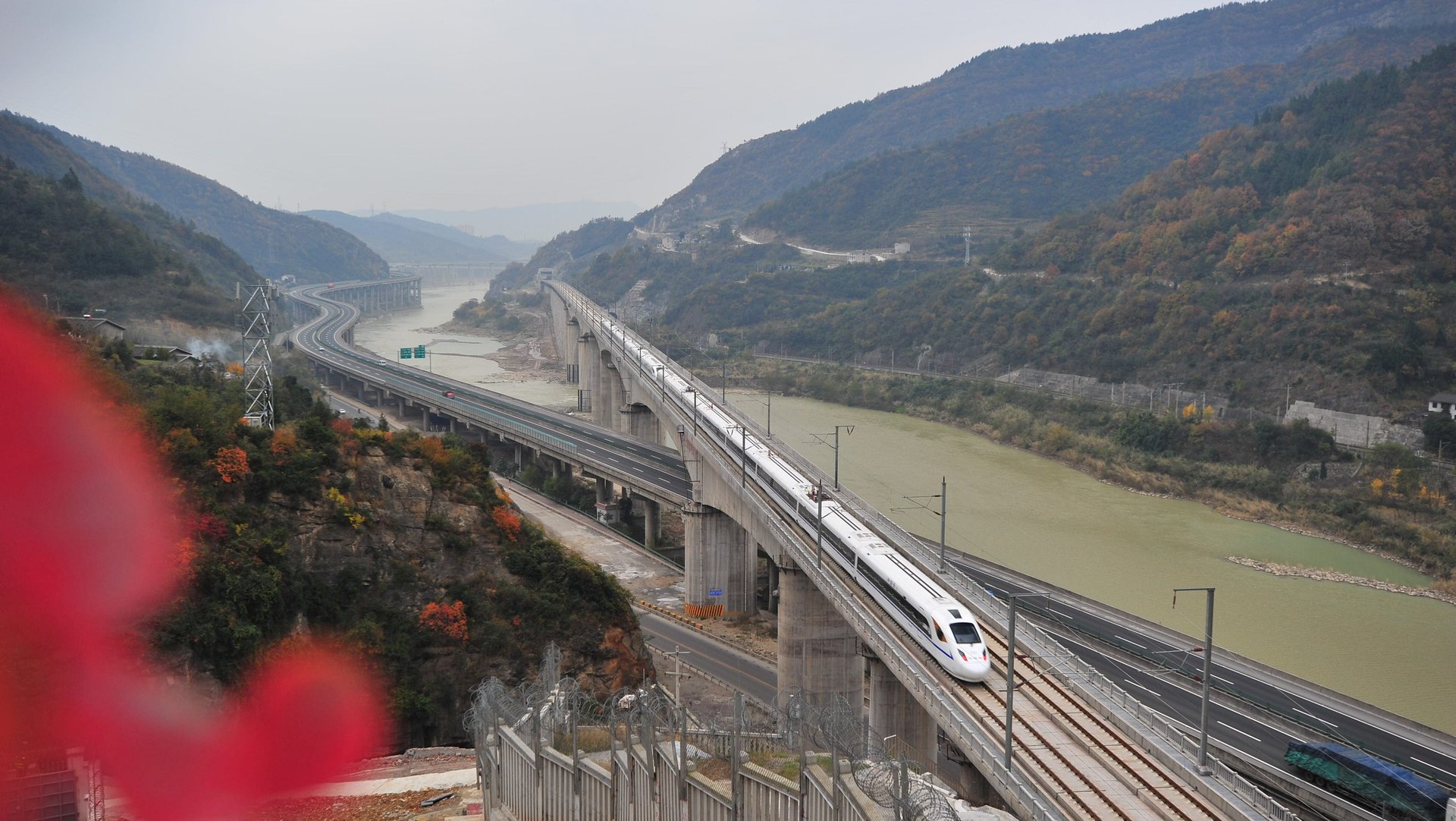California’s bullet train development hits another snag, while China’s barrels on
California’s ambitions to connect its cities with 800 miles of bullet train has long been a point of contention for its voters and politicians. In 2008, it was estimated that the infrastructure project, approved in a 53% to 47% vote, would cost $40 billion. Since then, this estimate has continued to mushroom, and the project has suffered continuous delays. In 2016, a new estimate pegged the project’s costs to $64 billion, and as of this week, the Los Angeles Times reports, more budget increases are imminent.


California’s ambitions to connect its cities with 800 miles of bullet train has long been a point of contention for its voters and politicians. In 2008, it was estimated that the infrastructure project, approved in a 53% to 47% vote, would cost $40 billion. Since then, this estimate has continued to mushroom, and the project has suffered continuous delays. In 2016, a new estimate pegged the project’s costs to $64 billion, and as of this week, the Los Angeles Times reports, more budget increases are imminent.
Now, just the track’s 119-mile segment in Central Valley will likely cost $10.6 billion, Roy Hill, who leads the main consulting firm on the project, said on Tuesday (Jan. 16) at the California Transportation Agency’s monthly board meeting. The new estimate increases the current budget by $2.8 billion, which had already been a bump up from the original $6 billion price tag.
The increases were mainly driven by higher-than-expected costs for land acquisition, utility system relocations, and safety barrier needs, Hill said. “The worst-case scenario has happened,” he told the board.
Yet another unanticipated price hike calls into question whether the US state will have enough political will, let alone financial capital, to push the bullet train to completion. The state transit agency’s new head Brian Kelly, also appointed as of Tuesday, reiterated his commitment to the bullet train in an interview saying that it remains crucial to the state’s future transportation and economic needs. In a May 2016 poll by the Public Policy Institute of California, 63% of state residents agreed that it will be important for the state’s “future quality of life and economic vitality.” But no doubt, the project will face a painstaking road ahead.
While California has been pulling teeth to finish the first phase of its train by 2029, China has relentlessly expanded its own bullet train network. In the same year that California voters approved its project, China fully opened its first high-speed rail line—75 miles (120 km) connecting major cities Beijing and Tianjin, with trains designed for a maximum speed of 217 mph (350 km per hour). California’s train would have a comparable cruising speed of 220 mph (354 km per hour). Now, a decade later, having already spent an estimated $360 billion (2.4 trillion yuan), China boasts 13,670 miles (22,000 km) of high-speed rail lines—greater than all other countries combined—and is in the process of laying down 9,321 miles (15,000 km) more by 2025.
What California has anticipated in the positive economic impacts of its project, China has already seen. In the densest parts of the country, the national network has already helped facilitate a “deeply connected economy,” the Economist wrote in January 2017. The rail lines have proven to be a boon for towns and cities along their path, connecting them with opportunities in China’s three big population centers—mega-cities Beijing, Shanghai, and Guangzhou. In return, the mega-cities have gained access to a much larger pool of labor and consumers, without needing to take on the burden of supporting them within their city walls.
Though it’s difficult to measure exactly how much the country’s bullet trains have and will continue to benefit its economics, a 2014 World Bank report said it would be “very substantial” and potentially boost business productivity by 10% in China’s coastal regions.
As China marches relentlessly forward in its mission to build a “high speed rail economy,” California must ask why it has fallen so far behind.